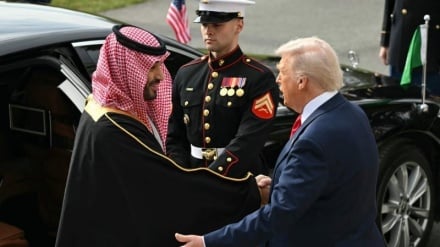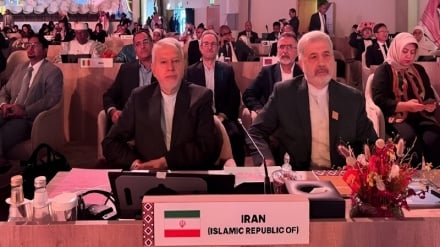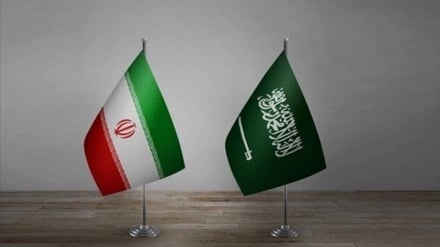Leaked cable suggests Saudi foreknowledge of S. Lanka terrorism
New evidence suggests that the regime in Riyadh not only had prior information of the brutal bombings and did nothing to stop them, but may have played a more active and direct role in the bloodshed.
Here we present you a report in this regard by Chile-based investigative journalist Whitney Webb for MintPress, titled: “Leaked Cable Suggests Saudi Foreknowledge of S. Lanka Terrorism”.
A leaked Saudi diplomatic memo obtained by Lebanese outlet Alahed News confirms that the Wahhabi regime of Saudi Arabia had foreknowledge of the Easter bombings that occurred last month in three cities on the island nation of Sri Lanka, killing nearly 300 and wounding over 500 more. The contents of the memo, which additionally suggests Saudi complicity in the attacks, are supported by the connections recently uncovered by Sri Lankan authorities that the ringleader of the bombings, Zahran Hashim, had to Saudi Arabia.
The document carries the Hijri Calendar date of 11/8/1440, which equates to April 17, 2019 in the Gregorian calendar — just a few days before the bombings — and is addressed to the Saudi ambassador to Sri Lanka, Abdun-Nasser al-Harethi, and authored by Saudi Foreign Minister Ibrahim bin Abdul Aziz al-Assaf. It carries the labels “urgent” and “top secret.”
The brief memo states the following translation English from Arabi:
His Excellency Ambassador Abdun-Nasser al-Harethi.
You should carry out the following measures immediately: First: You should delete all documents, computer data and latest correspondence with domestic and foreign members and groups, in addition to imposing a curfew for the embassy personnel unless [travel] is necessary;
Second: You should inform all those related to the Kingdom of Saudi Arabia — including counselors, security forces and intelligence during the three coming days, especially on the Christian Easter Day — to avoid presence in public and crowded places, namely churches;
Third: You should send written news about the Sri Lankan authorities and their viewpoints regularly to this ministry
(Signed) Foreign Minister Ibrahim bin Abdul Aziz al-Assaf
The memo carries the seal of Saudi Arabia, conforms the format of other leaked Saudi diplomatic memos, and carries two watermarks. The memo dovetails with other new evidence.
The contents of the memo from the Saudi foreign minister to the Saudi ambassador to Sri Lanka, particularly its indication of prior knowledge of danger in crowded places and churches on Easter Sunday, have taken on a new significance following the recent arrest of Mohamed Aliyar, a 60-year-old, Saudi-educated Wahhabi cleric who operated the Center for Islamic Guidance in Zahran Hashim’s hometown of Kattankudy. According to a plaque outside of the Wahhabi religious center operated by Aliyar, the center is funded by unnamed Saudi and Kuwaiti donors.
A statement released by Sri Lankan police stated that “Information has been revealed that the suspect arrested [Mohamed Aliyar] had a close relationship with … Zahran and had been operating financial transactions” on his behalf and was also “involved” in the training of the suicide bombers responsible for the massacres on Easter Sunday.
A group of board members of the center, who spoke to the South China Morning Post prior to Aliyar’s arrest, stated that the center was funded by “local donations, student fees, and private donors who were classmates of Aliyar’s in Riyadh;” denounced Zahran Hashim as a “troublemaker;” and could not recall having seen him at the center recently. However, the police statement that followed Aliyar’s arrest suggested that his relationship with Zahran Hashim was not a part of his public persona.
Of key interest in the police statement is the mention of Aliyar’s operating of “financial transactions” on Zahran Hashim’s behalf in the lead-up to the attacks. Several reports, such as this one from the BBC, noted that the attacks “required detailed planning, safe houses, an extensive network of planners and handlers, expertise on bomb-making, and significant funding.” Aliyar’s connections to wealthy Saudi donors and to Zahran suggest that he may have been a liaison for much of that funding.
In addition, the leaked memo’s instruction for the Saudi ambassador to “delete all documents, computer data and latest correspondence with domestic and foreign members and groups,” suggests that the Saudi Embassy in Sri Lanka may have been aware or party to these or other transactions related to the Zahran-led attacks.
While it is possible that funding had come from elsewhere, the fact that Zahran’s sister, Madaniya, had been sent 2 million Sri Lankan rupees (around $12,000) from Zahran just days before the blast suggests that the amount of money involved in funding this operation was significant indeed and likely of foreign origin.
The fact that the Daesh terrorist outfit quickly claimed responsibility for the bombings — and that Zahran pledged loyalty to the group just hours before the attack — further suggests a Saudi role, since the Riyadh in regime was revealed to be funding and logistically aiding the terror group in 2014.
Earlier, leaked emails from former Secretary of State Hillary Clinton revealed that the US government has long known that Saudi Arabia and other Persian Gulf Arab states are among the main financiers of the international terror group, known as Daesh.
The leaked memo contained in the email to Clinton states: “We need to use our diplomatic and more traditional intelligence assets to bring pressure on the governments of Qatar and Saudi Arabia, which are providing clandestine financial and logistic support to ISIS and other radical groups in the region.”
While mainstream reports have long asserted that it was private Saudi donors funding the terror group, this email revealed that US intelligence had determined that the Saudi government was funding the group and also providing them it logistical assistance.
The Daesh’ widely acknowledged role in the attacks and its known relationship to the Saudis — in combination with the recent arrest and role of Mohamed Aliyar in the attacks and the contents of the memo from the Saudi Foreign Minister — strongly suggest that the government of Saudi Arabia not only had foreknowledge of the brutal bombings (and did nothing to stop them) but may have also played a more active role in the bloodshed.
AS/SS


